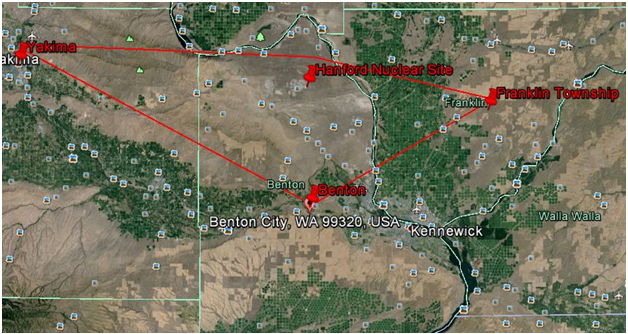I have blogged recently about the subtle long-term effects of radiation exposure on human health. It can take decades for radiation damage to manifest as illness so it is very difficult to pin down the dangers of radioactive contaminants. Recently there have been studies that support the idea that radiation from nuclear power plants, uranium mines, use of depleted uranium, nuclear waste and nuclear test can be connected to human illnesses.
In April of this year the News Network and Broadcast Collective published a report that rare birth defects in the three counties that border the Hanford Nuclear Reservation in Washington States are four hundred percent above normal. Hanford is one of the most radioactively contaminated sites in the world; the legacy of decade of nuclear weapons production with little concern for safety or environmental impact. An epidemiologist from the Center for Disease Control and Prevention stated that the cluster of birth defects is not near Hanford which would seem to be an inaccurate statement.
Hanford is on the border of Benton and Franklin counties with the border of Yakima County about 30 miles from Hanford. Since 2010, there have been 30 cases of anencephaly diagnosed in Franklin, Benton and Yakima counties. Anencephaly is a rare birth defect of the brain that is often fatal in which part of the brain does not develop. This rate of 8.7 cases per 10,000 people is four times the average rate of 2.1 cases per 10,000 people.
A nuclear engineer at the Hanford facility has recommended to his family that younger members should not live within a hundred miles of Hanford for their own safety. He said that " the open garbage disposal pits, leaking containers at “parking lots”, leaking tanks and other sources of contamination endanger the population around the Hanford reservation by releasing a cohort of radioactive isotopes or hot particles including plutonium into the air and the groundwater."
The cleanup of Hanford is being hotly debated and has even reached to the courts. There are plans to dig up fifteen feet of topsoil in the ten most contaminated areas of the Hanford Plateau. The local head of the U.S. Environmental Agency has suggested that it would be cheaper and easier to only dig up the top ten feet instead. One of the big problems with that is that the contamination goes much deeper than 15 feet. While removing topsoil and using uncontaminated topsoil as a fill might help protect people on the surface, the contamination still in the ground can be leached into the ground water and make its way to the Columbia River.
The Hanford cleanup has been plagued by lies, illegal action, incompetence, and neglect by the U.S. Department of Energy and the civilian contractors who are responsible for Hanford. It is time for the U.S. government to put some of the billions allocated for its nuclear arsenal into the cleanup of the place where a lot of those weapons were developed and manufactured.
